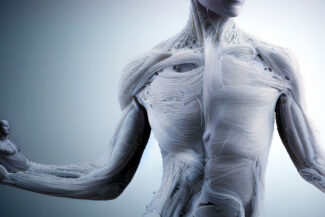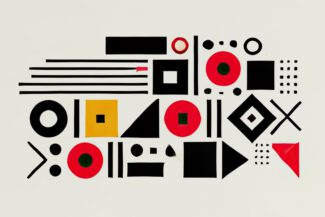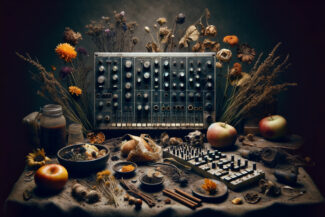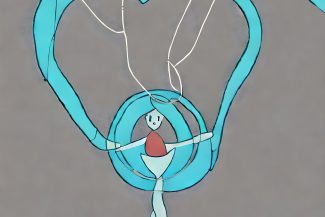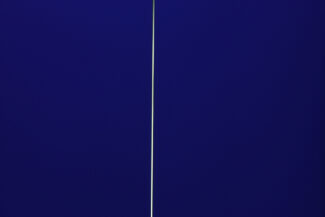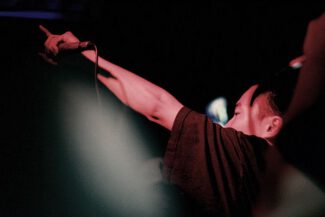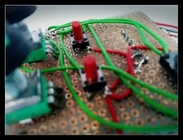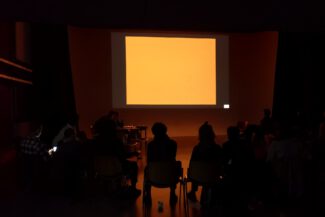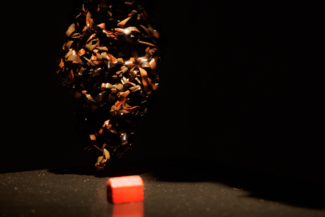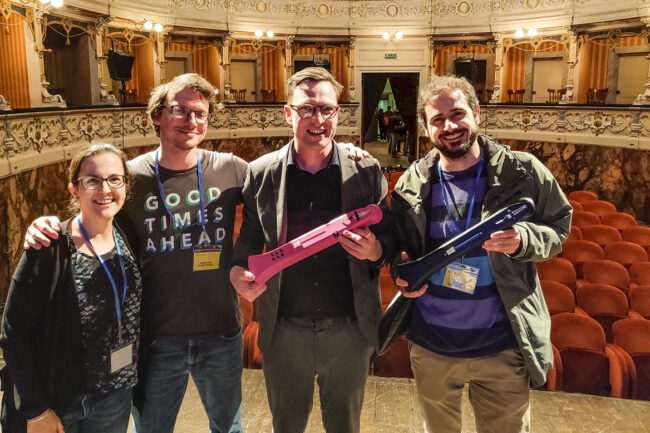Meeting (of) Sonic Beings: Children as Artistic Researchers (AR Pilot)
This AR-Pilot project, conducted by Wei-Ya Lin, Ragnheiður Erla Björnsdóttir and Jelizaveta Vovka, aims to prepare a FWF-PEEK proposal with the working title – Meeting (of) Sonic Beings: Children as Artistic Researchers. Based on the ethnographic study of the previous project Music Without Borders[1] (2015-2017), the project Meeting (of) Sonic Beings: Children as Artistic Researchers will explore the relationships between children’s ontologies and sonic beings through embodied sound-making practices. In this context, children (ages 8-10) will act as artists, artistic researchers, teachers and leaders in their own right[2], therefore, have agency in the creation of educational material. In practice, they will lead their own sonic projects based on their own musical practices. Thus, this project aims to broaden the scope of the diversity of repertoire/teaching material/research perspectives in music education and ethnomusicology through artistic research. Also, it will contribute to the discourse of top-down in music education by challenging Eurocentric notions within the disciplines and exploring alternative approaches to sound-making and identity exploration. This involves the engagement with the culture, politics, environment and aesthetics of sound and, thus, the transformation of sound into an analytical category[3]. Finally, this project tries to understand not only the cultural consumption of sound but also artistic researchers’ identities, ontologies and epistemologies through sound(ing).
The central research questions are:
- How might sonic beings and researchers’ identities intersect?
- How might sonic beings foster ecological consciousness?
- In what ways might music education be decolonized in the case of Austria?
The Planned Research Methods for the FWF-PEEK Application
The project proposes a co-designed and flexible research model that focuses on each researcher’s perspectives and needs. The research model is constructed to consistently react to the (co-)researchers’ ideas and reflections by being collaboratively redesigned with all research team members throughout the research process, in the frame of artistic research and ethnomusicology sessions with the (co-)researchers. Sub-goals, sub-projects and sub-questions should be developed during this dynamic process. The methods we plan to use are:
- Participatory Action Research
- Artistic Fieldwork
- Embodied Sound-Making Practices
- Library of Sonic Beings: (Co-)researchers’ Self-reflections
- Dissemination
[1] Final report of this project can be accessed here: https://www.mdw.ac.at/upload/MDWeb/ifs/downloads/EndberichtMusikohneGrenzen.pdf
[2] Hickey-Moody, A., Horn, C., Willcox, M., & Florence, E. (2021). Arts-Based Methods for Research with Children. Switzerland: Palgrave Macmillan. https://doi.org/10.1007/978-3-030-68060-2.
[3] Patterson, M., and Larsen, G (2019). “Listening to Consumption: Towards a Sonic Turn in Consumer Research.” Marketing Theory 19, no. 2): 105–27. https://doi.org/10.1177/1470593118787583.
Affording Bodies (AR Pilot)
This AR pilot project aims to develop a visual map of how „realistic“ virtual human bodies are currently conceptualized, deployed, used and traded for/on consumer level applications and platforms centered on 3D humanoid avatars. It will survey digital human design software applications, social VR CVEs and scientific parametric body models. The mapping process is understood as a method for identifying discernible themes and features of the collected material and connecting it to broader principles like parametrization, fragmentation, sexualization, naturalization and normalization.
SOUND AS SCORE (PEEK project)
Composers, musicians, psychoacousticians and musicologists will explore these questions in close collaboration. To get answers to these questions we will launch an international open call to composers, inviting them to submit compositions based on an audio score on the one hand and set up a lab for compositional experimentation with audio scores and its interpretation on the other. In this lab, we create space for analysis and debate regarding the different methods and concepts underlying these audio scores and examine the theoretical concept of mimesis in terms of its applicability to the aesthetic analysis and evaluation of audio scores. In order to better understand the perception of rhythm, pitch and timbre in the interpretation of audio scores, specific audio scores are developed together with psychoacousticians and their interpretation is analyzed using psychoacoustic methods.
The research project aims to create awareness for and new insights in this compositional approach through an intensive exchange between composers, musicologists and psychoacousticians, and an interdisciplinary technique of analysis will be developed.
The primary staff involved in the project are Elisabeth Schimana (composer), Susanne Kogler (musicologist) and Piotr Majdak (psychoacoustician)
Website: Sound as Score
Spirits in Complexity (PEEK project)
Music is based on the interaction of humans and sounding instruments in a specific context, i.e., a social, cultural and architectural space. Years of artistic practice often lead to close functional and affective relationships with the objects involved with acoustic instruments, but also with other technical devices such as recording equipment, synthesizers and even software. These working relationships between human and non-human actors can take the form of a kinship relationship, but can also be of a negotiating or even confrontational nature, or take on ritual and spiritual forms. We use the titular term spirits in a metaphorical sense to refer to an opaque complexity that characterizes human and non-human interaction in the artistic-creative context. Furthermore, the spirits stand for the self-willedness of complex dynamic systems that resist purposeful control and demand attentiveness and a kind of respect from people in order to make interaction possible in the first place. In contemporary music-making, objects of artistic practice are more often micromechanical/electronic/algorithmic technologies than handmade materials. Their complexity often exceeds the level at which technology is understood by most people in its full depth in other words, we are dealing with black box systems. This is particularly evident in technologies based on deep learning (AI). Nowadays, such systems are used for all kinds of purposes, also as tools for music analysis or generation, or for interactive co- creation. How does the use of technology in contemporary artistic practices change when the interaction is expanded from a purely analytical or control perspective to include kinship, negotiation, confrontation, deception, seduction, abuse, etc.? Our central hypothesis is that through a deep understanding of the personal properties of music technology, new forms and qualities of artistic expression are unleashed that would otherwise be unattainable. Among other things, we will look at the individual lives of electroacoustic instruments; change the environmental conditions in which such instruments unfold; explore feedback as a means of subtle contact; attempt to shed light on the latent spaces of AI models; artistically utilize music systems that automatically generate music, and create collaborative compositions by human and non-human contributors. We hope to gain insights that can inspire the way we deal with the AI systems of everyday life towards a consciously structured and critical coexistence with the technologies and the underlying techno-monopolies that so strongly determine our lives today.
Team: Thomas Grill | Arthur Flexer | Angélica Castelló | Marco Döttlinger | Patrik Lechner | Hui Ye | Tasos Zembylas | Miriam Jochmann
National Research Partner: Johannes Kepler University (JKU), Linz, Austria
Duration: April 2024 – September 2026
Funding: The PEEK Project AR 821-G is supported by the Austrian Science Fund (FWF)
PHILOSOPHY IN THE ARTS : ARTS IN PHILOSOPHY (PEEK project)
IN ARTISTIC RESEARCH AND PERFORMANCE PHILOSOPHY
Wider arts-based research context
Arts-based-philosophy is an emerging research concept at the cutting edge of the arts, philosophy and the Sciences, in which cross-disciplinary research collectives align their research practices to finally stage their investigations in field-performances, shared with the public.
Objectives
Our research aims to explore the significance of the *heart* (intuitive reason) for artistic research and performance philosophy from a cross-cultural perspective. The investigations are based on the concepts of the *heart* in the works of two artist-philosophers, who gave us a delicate taste of what art-based-philosophy could be, once the arts and philosophy cross their potentials: Nietzsche’s Thus Spoke Zarathustra and Aurobindo’s poetic opus magnum Savitri.
Methods and Formats
Our artistic research methods will include the following research formats: art-labs, a notebook, a mobile heart-lab and 12 field-performances, in which the voices of contemporary Physics, Cardiology, South-Asian-Studies, Nietzsche-Studies and the arts will finally be staged on two research festivals Philosophy On Stage#6-#7 in Vienna (BRUT Wien) and in India (ADHISHAKTI Laboratory For Theatre Art Research and SVARAM Music Research). The format *field-performance* has been developed by Böhler (PI) and Granzer over the last 25 years as an innovative method to stage philosophical questions in cross-disciplinary manner in touch with the public.
Innovation
What is new in the conception of the *heart* in Nietzsche and Aurobindo is their common claim, that a *heart* implies a virtual plane of possibilities. *Hearts* are drawn toward a future to come which make them attractors of virtual possibilities, ready to matter. In its deepest depth, a *heart* cares for the event of possibilities, that so far have
not yet mattered by creating a taste (bodily-felt-sense) that allows one to feel the possibility of a future, right before it does matter, flash and collapse. Such concepts show striking similarities with contemporary concepts in philosophy-physics, e.g. the concepts of “virtual particles” and “quantum vacuum fluctuations” (Barad, Traxler).
It is telling, that in Indian philosophy and aesthetics an aesthete is called sahṛdaya––a term, which literally means “somebody, with a heart.” As if an aesthete would be a person that is defined by thinking in alignment with his/her *heart* and not against his/her *heart*.
Primary stuff involved in the project
Arno Böhler (PI, artist-philosopher) and our “core Artistic Research Ensemble” (cARE): Aurelio (SVARAM), Patrick Beldio (South-Asian-Studies), Jyoti Dogra (Performer), Nikolaus Gansterer (Painter), Susanne V. Granzer (Actress), Florian Reiners (Actor/Speech trainer), Sabina Holzer (Dancer), Johannes Kretz (Musician), Stefan Dobner (Cardiologist), Tanja Traxler (Quantum Physicist), Yunus Tuncel (Nietzsche Scholar), Evi Jägle (PhD), Christoph Müller (PhD).
Co-operating institutions: University of Music and Performing Arts Vienna (research seat: ARC-mdw), Adishakti Theatre Research (India), Svaram Musical Instruments and Research (India), BRUT WIEN, Volkstheater Wien, University of Vienna (Department of Philosophy).
Audio Ghosts (PEEK project)
The arts-based research project AUDIO GHOSTS deals with auditory illusions – auditory impressions that physically do not exist but are still perceived by humans. Auditory illusions can be deliberately used for sound installations to create so-called “auditory ghosts”. Such sound installations are concerned with the artistic design and experience of acoustic environments. AUDIO GHOSTS incorporates the spatial effects created by auditory illusions: Depending on the listening position, sound events can be perceived in various ways, encouraging listeners to create personal sound experiences.
In the course of the project, the following research questions will be addressed:
1) How to incorporate auditory illusions in musical compositions?
2) How to investigate the nature and effects of auditory illusions when using the tools of art-based research?
3) To what extent can sound installations involving auditory illusions enhance conscious physical, sensory, and emotional experience?
In AUDIO GHOSTS, art-based research methods and compositional approaches will be combined with the scientific state-of-the art methods of audio-signal processing and psychoacoustics. By doing so, our understanding of auditory illusions will be expanded and made accessible to a wide audience of both scientists and composers.
A custom-made listening lab will facilitate the composition of sound installations tailored to the project’s content. In perceptual experiments, the effects of these compositions will be investigated by means of questionnaires and interviews. This way, the invited artists will be able to systematically work on sound installations and present their results within the framework of a festival.
All research activities will be documented in an online blog and compiled in a listening archive. The results of the project will be presented at scientific conferences and published in scholarly journals.
AUDIO GHOSTS is considered a lighthouse project for deepening our understanding of the unexplored perceptual areas of sound installations. The project is led by sound researcher Bernhard Gál and composer Veronika Mayer (Artistic Research Center of the University of Music and Performing Arts Vienna). From the psychoacoustic perspective, they will be accompanied and supported by scientists Piotr Majdak and Florian Pausch (Acoustics Research Institute of the Austrian Academy of Sciences). The project is supported by a scientific advisory board which unites experts from music, sound art, philosophy, and the social sciences.
Team: Bernhard Gál (PI)| Veronika Mayer | Piotr Majdak | Florian Pausch
National Research Partner: Acoustics Research Institute, Austrian Academy of Sciences
Duration: October 2023 – September 2026
Funding: The PEEK Project AR 774-G is supported by the Austrian Science Fund (FWF)
An Integration of Rap Music and Neue Musik, TIAN FU – AR Pilot project
Neue Musik (European art music in the 21st-century). The idea came out of my identity: On the one
hand, I am a composer, who received systematic training of European art music (composition,
piano, and music theory); on the other hand, I am an emcee (rapper), a beat maker, who engaged in
rap music since teenage. Instead of stressing on the opposition between art music and popular
music, this project aims to find intersections and to explore the possibilities of comprehension and
interaction.
In order to avoid the contextual confusion, I restrict the viewshed of my research within the
scope of Chinese Rap and the “Neue Musik” that I understand based on my knowledge system. So,
on this basis, the central questions of my project are: What are the distinctions and commonalities
of the creative artistic practices, representations, appreciations, disseminations and receptions
between the two fields of music? And how do they affect my artistic practices?
To answer the questions above, on one hand, I attempt to integrate the musical materials and
compositional techniques from two fields in my artistic practices. On the other hand, the method of
auto-ethnography will be implemented to discover how the aesthetic decisions are made during the
compositional process based on my identity and knowledge system. Lastly, the feedbacks of my
works from the colleagues and audience will be collected and discussions/talks will be organized in
order to finally establish a dynamic system: creative practices — self-reflection — feedbacks from
“outside world”.
Keywords: rap music, Neue Musik, integration, artistic research, auto-ethnography, creative
practices
Études for live-electronics (PEEK project)
Wider arts-based research context:
Études for live-electronics is an artistic research project that aims to re-define the western classical music-influenced concept of études, by applying it to the diverse practices in the field of electronic music performance, where most live-electronic practitioners (LEP) are simultaneously instrument developer, interface designer, composer, and performer. Practising études is a fun method to gain skills on acoustic instruments. However, with electronic instruments, the interface and the sound generator are decoupled, interchangeable, and instrument parts can even be driven algorithmically. Thus, the skills required by each LEP are unique, and research on knowledge transfer in electronic music performance is subsequently needed, a shortcoming, that is often discussed in the community for New Interfaces for Musical Expression.
Objectives:
With the overall aim to develop an agile concept of études, we will test the hypothesis that its core element – the encounter with a problem through repetition and slight variation – can be transferred to a multi-culturally driven, collaborative research procedure, that facilitates knowledge exchange through the practice of live-electronic music performance creation. Our goal is to build a community of key agents in the field that will study the acquisition and transference of skills and implement actions to share this knowledge.
Approach:
With cyclically recurring, artistic experiments in collaboration with practitioners from diverse backgrounds, such as sound artist KMRU aka Joseph Kamaru (Kenya), composer Trinh Luong Hue (Vietnam), music technologist Bernt I. Wærstad (Norway) and interaction designer Astrid Bin (UK), we will explore new methods to create skill-derived electronic instruments, historically-informed repertoire and collaborative live-electronic performances. For a multi-cultural perspective, the artistic research team will be in dialog with local music scenes in East Africa, Southeast Asia and Europe, giving public workshops and concerts in collaboration with international partner institutions. From the data collected during these actions, we will formulate a new understanding of études, applicable to live-electronic instruments of the 21st century.
Innovation:
This project will lead to methodological innovations for the development of electronic instruments and related repertoire, represents the first long-term investigation of how LEPs develop embodied knowledge with electronic instruments, and will, furthermore, explore new forms for the preservation of computer music works, by establishing an active musical live-performance practice around them.
Primary staff involved:
The project will run under the supervision of Alex Hofmann, working together with two PhD students at the University of Music and Performing Arts Vienna (mdw), in a strong collaboration with Karlheinz Essl from the Department for Composition (mdw).
Network of national and international cooperations:
- Karlheinz Essl – Department for Composition, Electro-acoustics and Sound Engineering (mdw)
- Bernt Isak Wærstad – Norwegian University for Science and Technology (NO)
- Luong Hue Trinh – composer, performer (VN)
- Joseph Kamaru – sound artist, composer performer (KE)
- Astrid Bin – Bela.io / Ableton Live (DE)
- Andrew McPherson – Queen Mary, University of London (UK)
- Joachim Heintz – Institute for New Music Incontri at the University of Music, Drama and Media Hanover (DE).
- Marko Ciciliani – Institute for Electronic Music and Acoustics (IEM) of the Arts University in Graz (AT)
- Julia Mihály – HfMDK Frankfurt (DE)
- Martin Kaltenbrunner – Tangible Music Lab at the University of Art and Design in Linz (AT)
- Susanne Gerhard – Cultural Programme Office, Goethe-Institute Nairobi (KE)
- Valerie-Ann Tan – Goethe-Institut Singapore (SG)
Confronting Realities. Working on Cinematic Autosociobiographies (PEEK project)
Book – Knowing in Performing
Knowing in Performing. Artistic Research in Music and the Performing Arts
This anthology takes stock of current developments in and reflections on artistic research in music and the performing arts. Thirteen international contributions explore the possibilities of processual knowledge production, taking into account participatory and experimental approaches, and examine their institutional implementation. How can performing be transformed into cognition? What does it mean to think through music, theatre, or dance?
The anthology published by Annegret Huber, Doris Ingrisch, Therese Kaufmann, Johannes Kretz, Gesine Schröder and Tasos Zembylas with transcript is based on contributions to the symposium “Knowing in Performing” in April 2018 as well as to the eponymous lecture series that took place at the mdw – University of Music and Performing Arts Vienna from 2018 to 2020. As part of the book presentation, the dancer, choreographer and artistic researcher Evfa Lilja has read excerpts from her opening statement on the state of artistic research.
Lecture by Efva Lilja at the book presentation of “Knowing in Performing” DOI: 10.21939/KIP-2021-LILJA
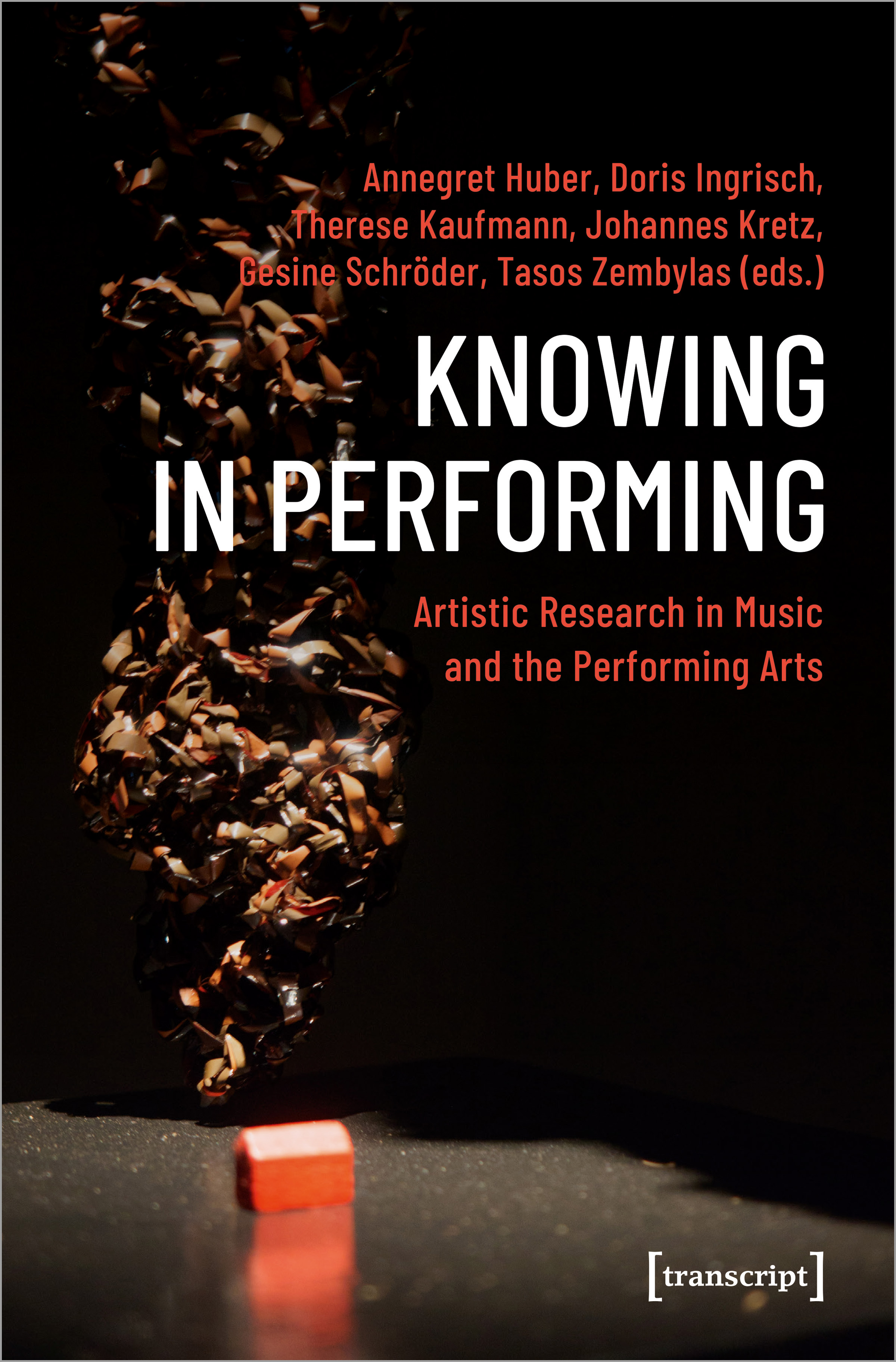
Cover image: Angelicá Castelló – magnetic room
AR Pilot Call – support for artistic research
In 2018 the mdw began offering internal financial support for pilot projects in the field of artistic research.
The objective of this call was to facilitate the further development of artistic research practices, methods, and discourses within the fields and disciplines represented at the mdw. Nine artistic research projects, most of which are transdisciplinary and collaborative in nature, have since been granted support, and several of their teams have already submitted third-party funding applications to the Programme for Arts-Based Research (PEEK) of the Austrian Science Fund (FWF). The nine internally funded projects were selected from over 20 submissions by virtue of their innovative research questions and commensurately portrayed methods, with the idea being that artistic practice should play a central role in the research process. A further objective of this pilot call, above and beyond facilitating eventual third-party funding applications, was to disseminate projects’ findings via public performances, exhibitions, and publications. One avenue of publication is the website “Research Catalogue”—an online database that collects, archives, publishes, and exhibits artistic research—run by the Society of Artistic Research (SAR), of which the mdw is a member. The University’s present objective is to further intensify and refine its activities in the field of artistic research, a field that is now developing in so many respects, via the lecture series Knowing in Performing, the ongoing PEEK projects Rotting Sounds and Creative (Mis)understandings, and preparatory work for the future doctoral programme.
Further informations at the Webpage of Research Support at mdw
Think Tank – about the foundations of artistic research
In 2018 in three meetings at mdw with experts from mdw and from outside perspectives of artistic research were discussed, their foundation, contexts, possible or impossible definitions.
Think Tank Artistic Research: Documentation of AR-Think Tank @mdw (in german).
